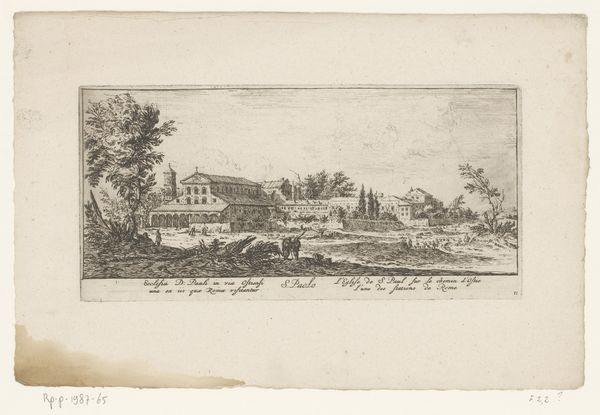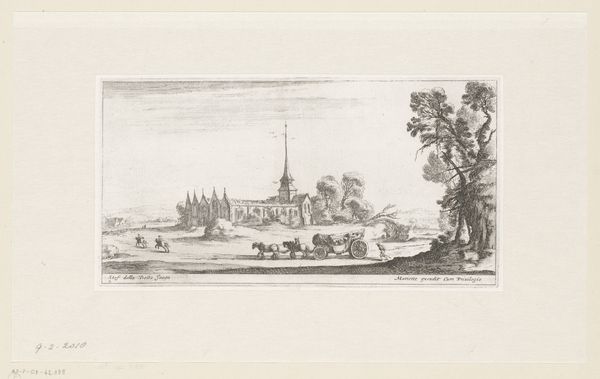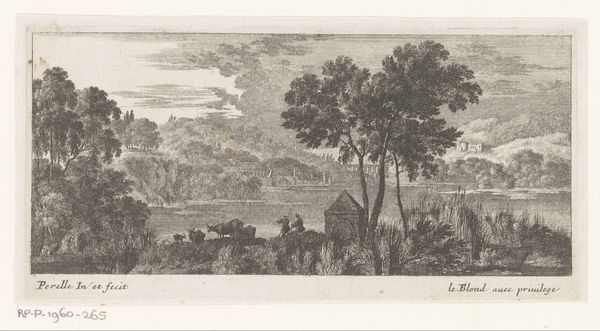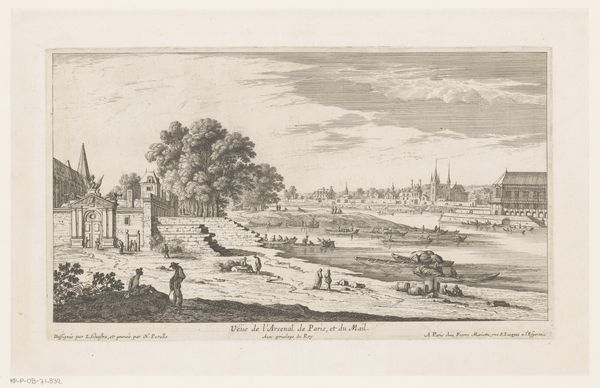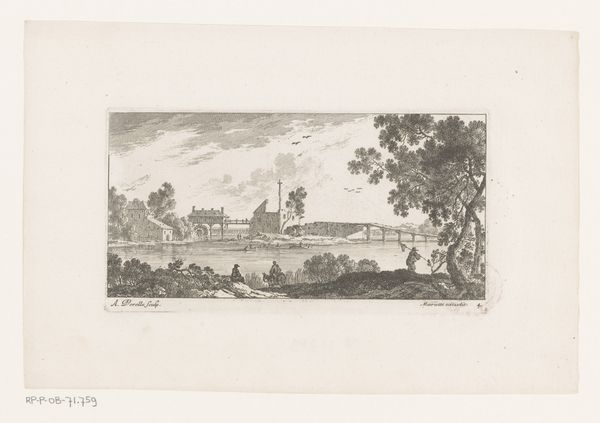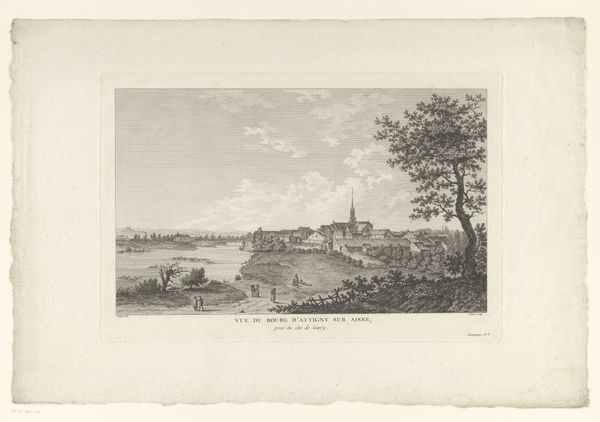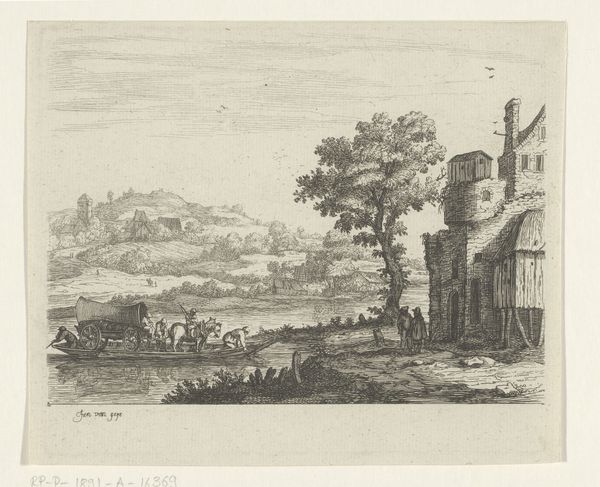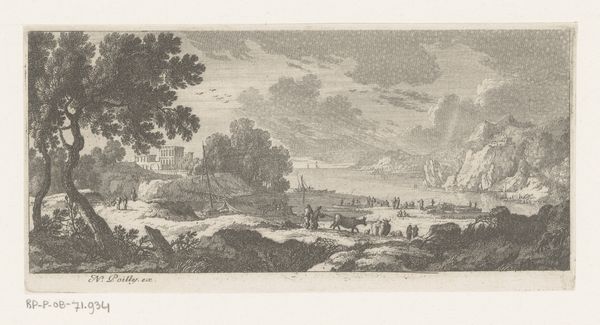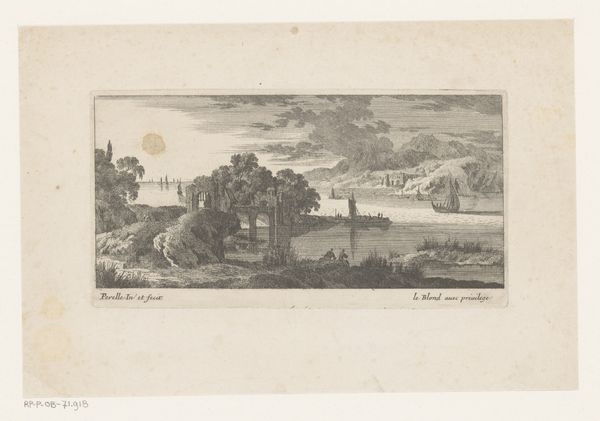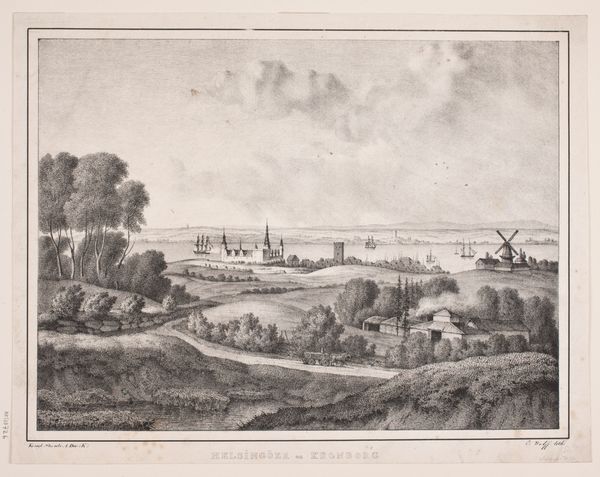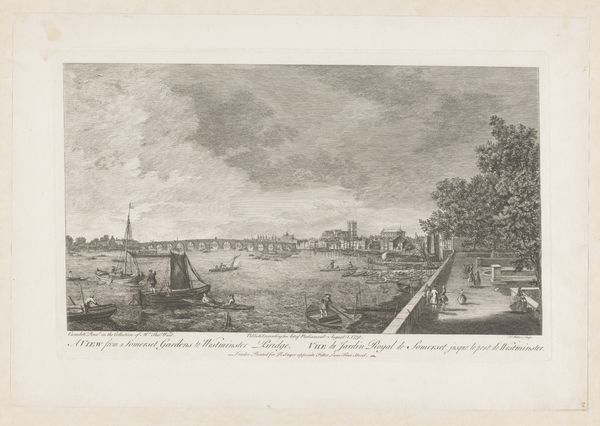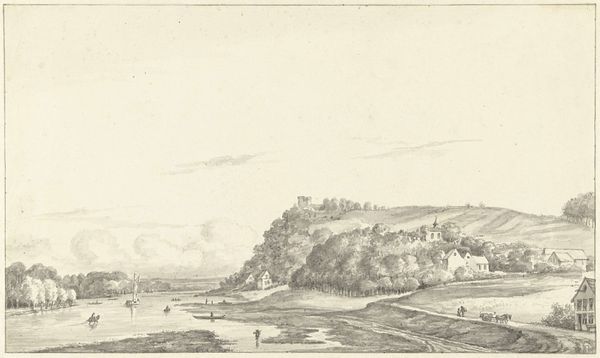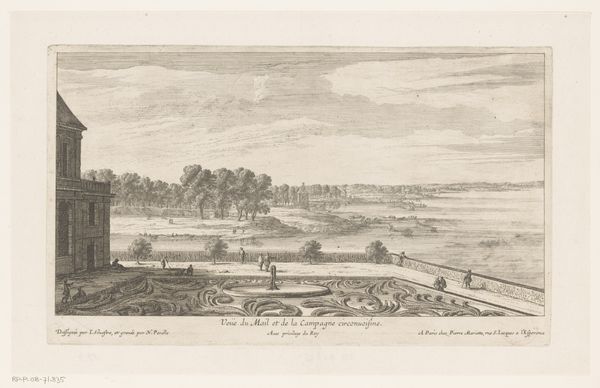
print, engraving
#
baroque
# print
#
old engraving style
#
landscape
#
cityscape
#
engraving
Dimensions: height 98 mm, width 178 mm
Copyright: Rijks Museum: Open Domain
Curator: This engraving, attributed to Adam Perelle and dating roughly between 1650 and 1695, is titled "Legerkamp bij ommuurde vesting aan zee"—an army camp near a walled fortress by the sea. It’s part of the Rijksmuseum's collection. Editor: Immediately, I'm struck by the sense of controlled chaos. The scene is brimming with figures, both soldiers and what appear to be civilians, yet there's this underlying order imposed by the rigid geometry of the fortress. It gives the print an unsettling feeling, like something is about to happen. Curator: That sense of unease might stem from the historical context. Seventeenth-century Europe was in almost constant conflict. Fortifications like this one, dominating both the land and seascape, became potent symbols of power but also vulnerability in a landscape increasingly shaped by military campaigns and shifting national borders. How did people’s everyday lives shift within such ever-present siege infrastructure? Editor: Exactly, and it seems Perelle really grasped this visual language of anxiety and might. The cannon firing from the cliff face to the left feels especially telling, echoing ancient visual symbols of dominance and threat found worldwide. Curator: I think the location is important as well; the site becomes liminal, mediating between land and sea, which becomes associated with trade and movement but is simultaneously a theater for territorial control and war. Editor: We could also think about the role of landscape. Perelle sets this stage very deliberately, with a wide body of water, distant ships, a rocky cliff… Even that single tree on the right seems significant in creating depth and framing our vision, guiding it directly toward the stronghold at the very center. Are we invited to be drawn in, to align with those within? Or does this framing create critical distance? Curator: It raises interesting questions about perspective, too, and about who the artwork positions as an ally. While the fortifications are at the literal center of the image, a case can be made for the argument that the lives of soldiers or community members could become focalized within discussions about nationhood or social issues raised by such artworks. Editor: Absolutely, the detail here—especially the almost casual activities within the camp, along with their weapons--gives this enduring idea that this place exists not merely for war, but is home and society too. It gives so much to think about! Curator: Indeed. Considering the complexities this image presents forces us to re-evaluate what the idea of "landscape" might signify within social and military history. Editor: A tiny but complex window into another world…it's fascinating how it makes you reflect!
Comments
No comments
Be the first to comment and join the conversation on the ultimate creative platform.
